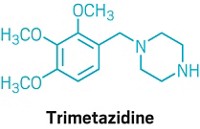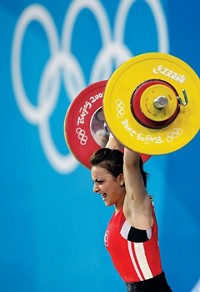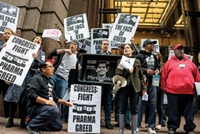Advertisement
Grab your lab coat. Let's get started
Welcome!
Welcome!
Create an account below to get 6 C&EN articles per month, receive newsletters and more - all free.
It seems this is your first time logging in online. Please enter the following information to continue.
As an ACS member you automatically get access to this site. All we need is few more details to create your reading experience.
Not you? Sign in with a different account.
Not you? Sign in with a different account.
ERROR 1
ERROR 1
ERROR 2
ERROR 2
ERROR 2
ERROR 2
ERROR 2
Password and Confirm password must match.
If you have an ACS member number, please enter it here so we can link this account to your membership. (optional)
ERROR 2
ACS values your privacy. By submitting your information, you are gaining access to C&EN and subscribing to our weekly newsletter. We use the information you provide to make your reading experience better, and we will never sell your data to third party members.
Pharmaceuticals
Biopharma Joins The Doping Battle
Companies team up with international drug agency to curb athletes’ use of performance-enhancing drugs
by Stephen K. Ritter
August 8, 2011
| A version of this story appeared in
Volume 89, Issue 32

“The thrill of victory … and the agony of defeat.” That delightful phrase, originating in the 1960s on “ABC’s Wide World of Sports” television series, captured in a few words the “human drama of athletic competition.”
But that was in front of the cameras. Behind the scenes and out of public view, another kind of drama was taking shape: Athletes’ increasing use of performance-enhancing drugs was creating a black cloud over the sports world.
Although the majority of athletes don’t seek an unfair advantage, doping, as the practice is called, has been a part of competitive sports since the ancient Greeks created the Olympic Games. Despite extensive efforts since the 1960s to use modern science and technology to flush out cheaters, the problem persists.
In a maneuver to gain the upper hand, antidoping authorities and biopharmaceutical companies have teamed up to fight the drug war. At a session aptly titled “How Dare They Dope with Our Medicines,” held on June 30 during the Biotechnology Industry Organization’s (BIO) annual convention in Washington, D.C., a panel of scientists convened to discuss their strategy.
“Abuse of modern medicines undermines the integrity of the game and jeopardizes the health of the athletes, at both the professional and amateur levels,” said Andrew J. Emmett, BIO’s managing director for science and regulatory affairs.
Although steroids are the most recognizable performance enhancers and have traditionally been the most abused drugs, the panel focused on biopharmaceuticals such as erythropoietin, human growth hormone, and insulin. Athletes are turning to these drugs because they are at the forefront of science and offer an opportunity to fine-tune human performance like never before. And because they closely resemble natural endogenous substances, synthetic biopharmaceuticals are hard to detect. For athletes, that lowers the risk of getting caught.
“The biopharmaceutical industry recognizes that it has the responsibility to help ensure the appropriate use of its products,” Emmett noted. “These are medicines designed to treat serious diseases such as cancer, diabetes, and enzyme deficiencies. Identifying drugs early in the discovery pipeline to manage their risk for abuse and developing new testing methods need our cooperation.”
To that end, the World Anti-Doping Agency (WADA) and the International Federation of Pharmaceutical Manufacturers & Associations signed a declaration last year that created a framework for how drug companies can collaborate with WADA. After the accord was signed, three leading pharmaceutical companies—GlaxoSmithKline, Amgen, and Roche—began working with WADA to develop the needed protocols.

WADA maintains the official list of banned substances and doping methods, and it operates an education program to inform registered competitive athletes about the rules and the dangers of using drugs illegally, explained Olivier Rabin, WADA’s science director. The agency also works with scientists to develop analytical testing methods, certifies testing labs, and oversees random, out-of-competition testing.
Beyond protecting athletes and the integrity of sports, preventing doping helps minimize the economic impact on pharmaceutical companies and consumers that invariably goes along with illicit drug use, Rabin said. For example, batches of medicines are occasionally stolen during clinical testing or distribution and then sold on the Internet or black market, Rabin related. Sometimes, drug candidates reported in the chemical literature or drugs in early-stage testing can be reproduced by underground chemists and sold illegally before they are approved. In the same vein, discontinued drugs can be resurrected by underground chemists. In addition, copycat drugs that are similar in structure and reactivity to known drugs can make their way into athletes’ hands.
WADA works with Interpol and other agencies to identify these drugs and their distribution networks and shut them down, Rabin noted. But new ones always pop up. Ultimately, the public image of pharmaceutical companies hangs in the balance of this cat-and-mouse game, he added.
“It is in this context that we find a lot of room for cooperation between the pharmaceutical companies and antidoping authorities,” Rabin said.
Under the new framework, WADA has worked out a screening plan with the companies that can be integrated into their internal processes to assess the doping potential of drug candidates throughout the development pipeline. The plan includes details about what type of structural and pharmacokinetic data WADA needs, measures for protecting proprietary data, and how to proceed when a drug with doping risk is identified.
Erythropoietin (EPO) sparked the WADA-industry collaboration, noted Steven G.Elliott, scientific executive director at Amgen. The poster child of biopharmaceuticals, EPO is a natural protein hormone that guides erythropoiesis, or the formation of red blood cells. In the 1980s, scientists determined how to engineer recombinant versions of EPO to treat anemia caused by cancers and kidney diseases.
Amgen developed the first synthetic version of EPO and sold it under the names Procrit and Epogen, Elliott related. Almost immediately the drugs began to be abused by professional cyclists, he said. Later on, track-and-field athletes, cross-country skiers, and rowers started using EPO—the drugs were even used in racing dogs, horses, and camels, Elliott added. Some doped athletes reportedly died because they had extremely high hematocrit levels—that is, a high percentage of blood volume taken up by red blood cells—making their blood too thick for the heart to pump.
“These incidents were extremely disturbing to us in the business,” Elliott said. “In the pharmaceutical industry, we are so focused on the benefits of our drugs that we forget they can be abused.”
The recombinant versions of EPO invariably differ from natural EPO and from each other in subtle ways, such as the pattern of glycosylation, Elliott said. For example, Aranesp, Amgen’s second-generation EPO that Elliott helped discover, contains two more N-linked oligosaccharide chains than natural EPO. Knowing about these differences allowed Amgen scientists to work with doping authorities to develop an EPO drug test in time for the 2002 Winter Olympics in Salt Lake City.
An EPO test was in place at the 2000 Summer Olympic Games in Sydney, but it wasn’t refined enough to catch anyone. But when Amgen scientists described the structure of the new drug and how it worked, drug-testing experts were able to design a foolproof test that started catching drug cheats and helped shut down abuse of Aranesp, Elliott said.
“There is no stronger voice for antidoping of a drug than the manufacturer itself,” Elliott observed. “We need to educate people about appropriate use of drugs and support development of tests, and we have to work together to ensure this happens.”
Barbara Leishman, clinical science leader at Roche, agreed. “The title ‘How Dare They Dope with Our Medicines’ gives a good sense of the extreme outrage we felt when it happened to us at Roche,” Leishman said.
Once one drug is found out, athletes who are looking to dope will move on to other drugs, Leishman noted. In the case of EPO, they switched from the first-generation version to second-generation versions and then to a third-generation version—Roche’s Mircera. This version of EPO is modified with methoxy polyethylene glycol, which gives the protein stronger activity and a longer half-life in the body compared with other versions of EPO.
In 2003, WADA learned that Roche was developing Mircera and contacted the company to see what might be done to prevent it from ending up in the hands—and bodies—of athletes. Roche scientists worked with WADA to develop a drug test before Mircera went on the market in 2008.
“We have to have an assay for internal use, but those assays are not always appropriate for antidoping measures,” Leishman said. “That is why it is critical to collaborate to redevelop assays for drug testing.”
Instead of studying the level of drug in sick patients, the firm needed to determine whether a healthy person such as an athlete had ever received the drug, Leishman said. When Roche developed a Mircera assay, the company worked through licensing agreements to transfer the technology to WADA-accredited labs to protect information about proprietary reagents. “We can’t just give away those secrets,” Leishman pointed out. Roche also worked with a contract lab to develop assay kits ahead of the 2008 Beijing Summer Olympics.
In Beijing, out of nearly 850 EPO blood tests, doping officials reported that six athletes tested positive. The new assay was also used to test samples collected during the 2008 Tour de France bicycle race and successfully snared a handful of cheaters.
“We believe there is an ethical and public health responsibility to optimize the safe use of all the drugs we have in development,” Leishman said. “Early detection of doping potential has allowed us to put risk-management procedures into place.”
The EPO testing efforts were done on an ad hoc basis, but the new collaborative agreement will streamline efforts going forward. One of the first benefits will come next year at the Summer Paralympic and Olympic Games in London. GlaxoSmithKline is providing lab space and equipment at one of its R&D sites for drug-testing authorities to set up the official drug-testing lab for the London Games.
“This is the first time a commercial partner has been brought in to help conduct drug testing at the Olympics,” said Pauline Williams, vice president of GlaxoSmithKline’s academic discovery performance unit. It could provide a blueprint for anti-doping labs of the future, she noted.
“What a great opportunity this is for pharma to do something proactive on a voluntary basis,” Williams added. “By recognizing a risk and an opportunity and doing something about it, we can put patient safety and athlete safety first.”





Join the conversation
Contact the reporter
Submit a Letter to the Editor for publication
Engage with us on Twitter